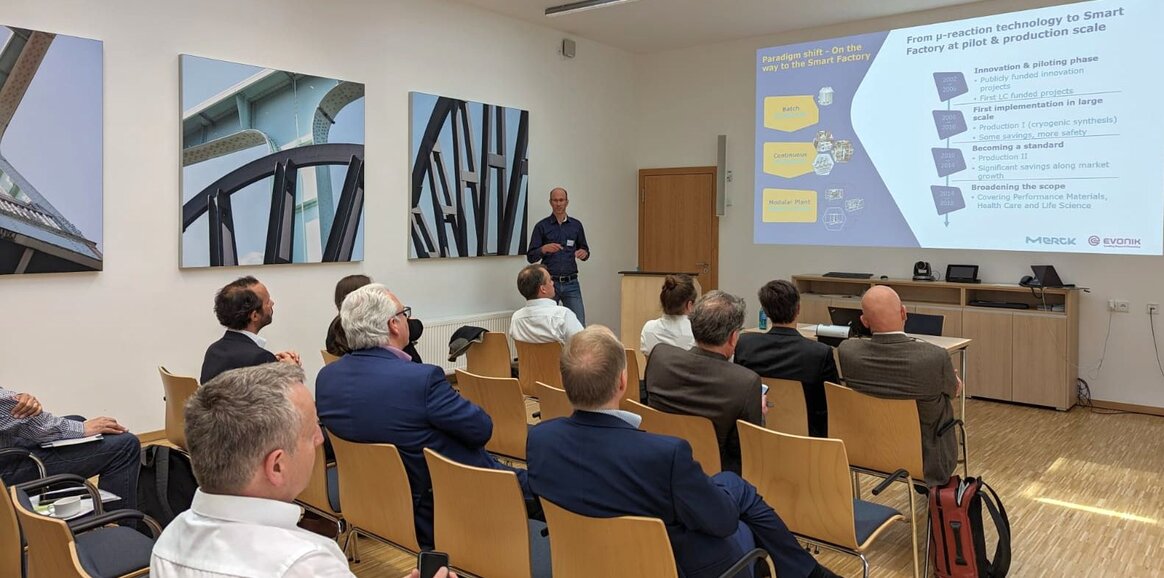

 Favorite (4)
Favorite (4)
At the IVAM Hightech Summit 2023 "Microtechnologies for a Smart World", a total of nine sessions, two workshops and a keynote presentation addressed technological innovations that make the world smarter. The conference event with networking meeting brought together leading experts from the high-tech industries in Bochum on May 3 and 4, 2023.
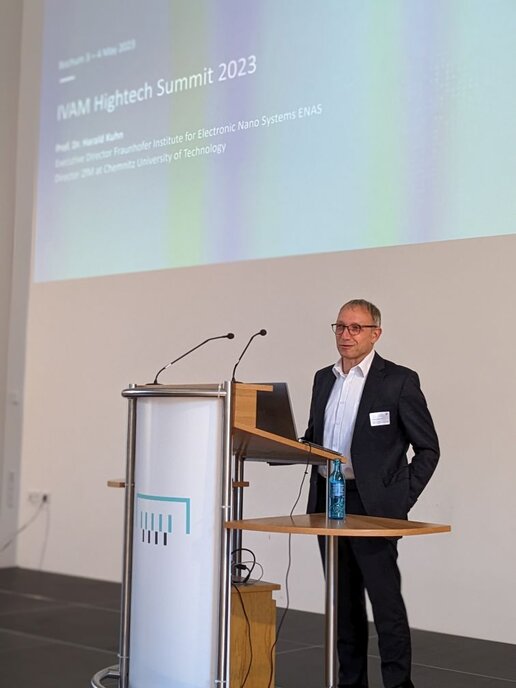
In his keynote presentation "The Future is Smart" Prof. Dr. Harald Kuhn from Fraunhofer Institute for Electronic Nano Systems ENAS and Chairman of the IVAM Advisory Board explained that the path to the smart world depends on many factors that no one can predict with complete accuracy. In addition to technology, the expertise of people and common sense are needed to drive digitization forward in the long term.
The crises of recent years, such as the Corona pandemic and geo-political crises, have shown that solutions are needed to prevent global supply chain problems and make the economy more resilient. The European Chips Act (ECA) is a European Union initiative aimed at countering supply problems for semiconductors. The aim is to strengthen semiconductor production and supply in Europe and reduce dependence on imports. Prof Kuhn sees the initiative as a great opportunity for the EU.
The content of the session on smart home was prepared together with the iHomeLab Think Tank and Research Centre for Building Intelligence.
Smart home technologies can be divided into home applications for
With regard to smart home applications and devices overarching protocols are important to create unified smart home systems. "Matter" is a communication standard for smart home devices that was developed to improve interoperability between different smart home platforms and devices. Previously, Matter was also referred to as "Project CHIP" (Connected Home over IP). Matter is based on an IP-based network protocol and is designed to allow smart home devices from different manufacturers to communicate with each other, regardless of the platform or transmission protocol used.
The purpose is to overcome fragmentation in the smart home space, where different manufacturers like Apple, Amazon, Google etc. have previously used their own proprietary standards and protocols. Matter is intended to allow consumers to seamlessly integrate devices from different manufacturers into their smart home and manage them through a common platform.
The aim is that smart home devices such as thermostats, light switches, door locks, cameras and other networked devices can communicate with each other and work together with a central control unit or smart home platform.
Population is growing and cities are getting bigger. Thus the concept of a smart city is to use modern technologies and digital innovations to improve life in urban areas and make it more efficient. A smart city strives to improve the quality of life for citizens, use resources sustainably, reduce environmental impact, and increase the efficiency of services and infrastructure.
In a smart city, various aspects of urban life are interconnected, including transportation systems, energy supply, communication networks, building automation, waste management, public safety, health services, and more. Through the use of sensors, data analytics, artificial intelligence and the Internet of Things (IoT), data is collected and analyzed to make informed decisions and optimize urban processes.
One important aspect is to keep in mind to involve older people into the transformation processes, to take them along and not to exclude them technologically.
Different resources of a communal management have to work together in an interdisciplinary way to drive development forward. One example in the context of the IVAM Hightech Summit was the German city of Bochum, which implements a smart water management System with a technology for sensory analysis of sewers.
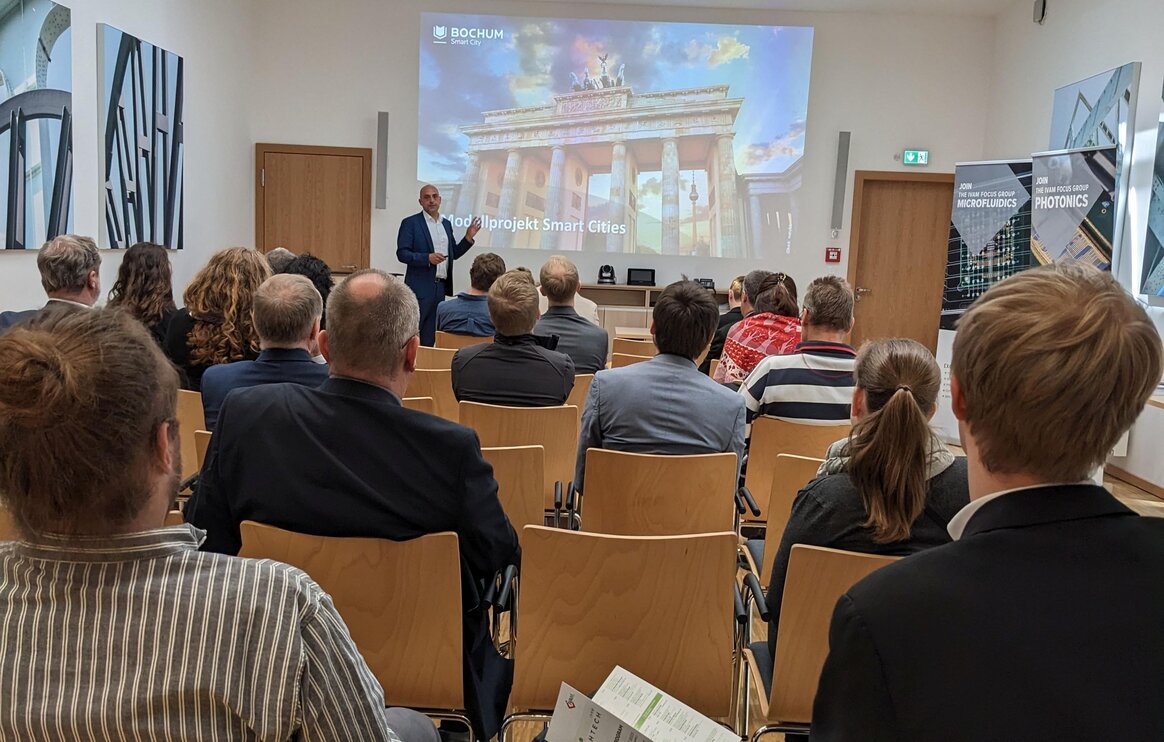
The Smart Care session addressed the use of smart technologies and digital solutions in health and care to improve the quality of care and the quality of life of patients. The combination of medical care with innovative technologies enables more effective, personalized and patient-centered care.
One particularly important aspect is the usability of smart devices. The devices and systems must be patient-centered and designed in such a way that peripheral users, such as relatives, caregivers or therapists, are not put off by the technology, but are happy to use it and see it as support and relief. One concept is the playful approach e.g. of rehabilitation applications using virtual reality glasses.
Another topic of the session was the optimization of the management of beds in hospitals. The concrete finding of beds in large hospitals thus the actual management of occupancy is a complex and difficult process. In the session a system for tracking and planning was presented
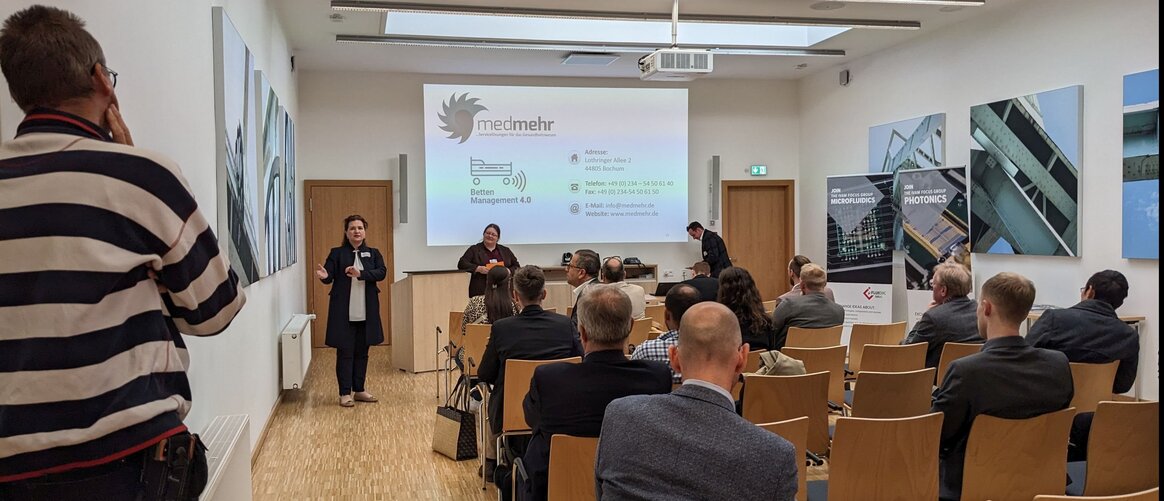
The session on "Smart Mobility" was organized in collaboration with the sensor technology network Detect. The focus was on digital technologies and intelligent solutions to make transportation more efficient, sustainable and user-friendly. It aims to improve the way people get around by using innovative technologies and data.
The goals are to reduce congestion, improve road safety, reduce the environmental impact of traffic, and provide efficient and convenient transportation for people. Smart sensor developments are essential to achieve smart mobility.
An innovative example is the increased driving safety with an ethanol sensor that prevents the car from driving as soon as ethanol is detected. Other highlights presented addressed AI-based flight planning based on radar and lidar or smart headlights

The start-up session began with an introduction to patents and IP management, highlighting that
Furthermore, various patent strategies were presented. Then the start-up competition began, with three companies pitching their innovative concepts
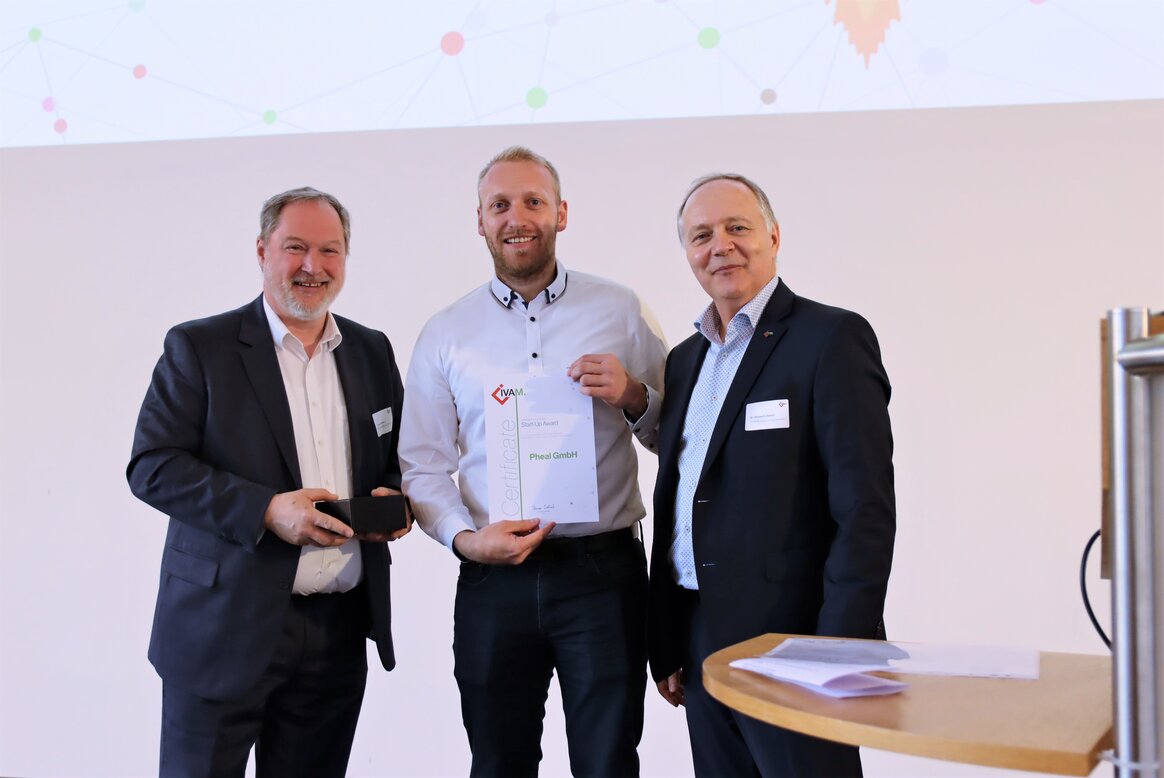
Smart Industry refers to the use of innovative information and communication technologies in industry to make production processes more efficient, flexible and connected. The aim is to create an intelligent, networked production environment in which machines, devices and systems can communicate with each other and exchange data in real time.
The digitalization of industry is leading to enormous data growth. By using data driven technologies, companies can optimize their production processes, increase efficiency, improve quality and increase flexibility. Data is the new gold.
Numerous new possibilities arise, from improved workflows through neural networks, deep learning and AI. Companies benefit especially in failure analysis and quality assurance.
The benefits that occur range from saving time and reducing labor costs, to improving sustainability (by avoiding waste or unnecessary steps, identifying potential recycling opportunities), to increased flexibility in manufacturing, improved robustness, and significantly higher profits for companies.
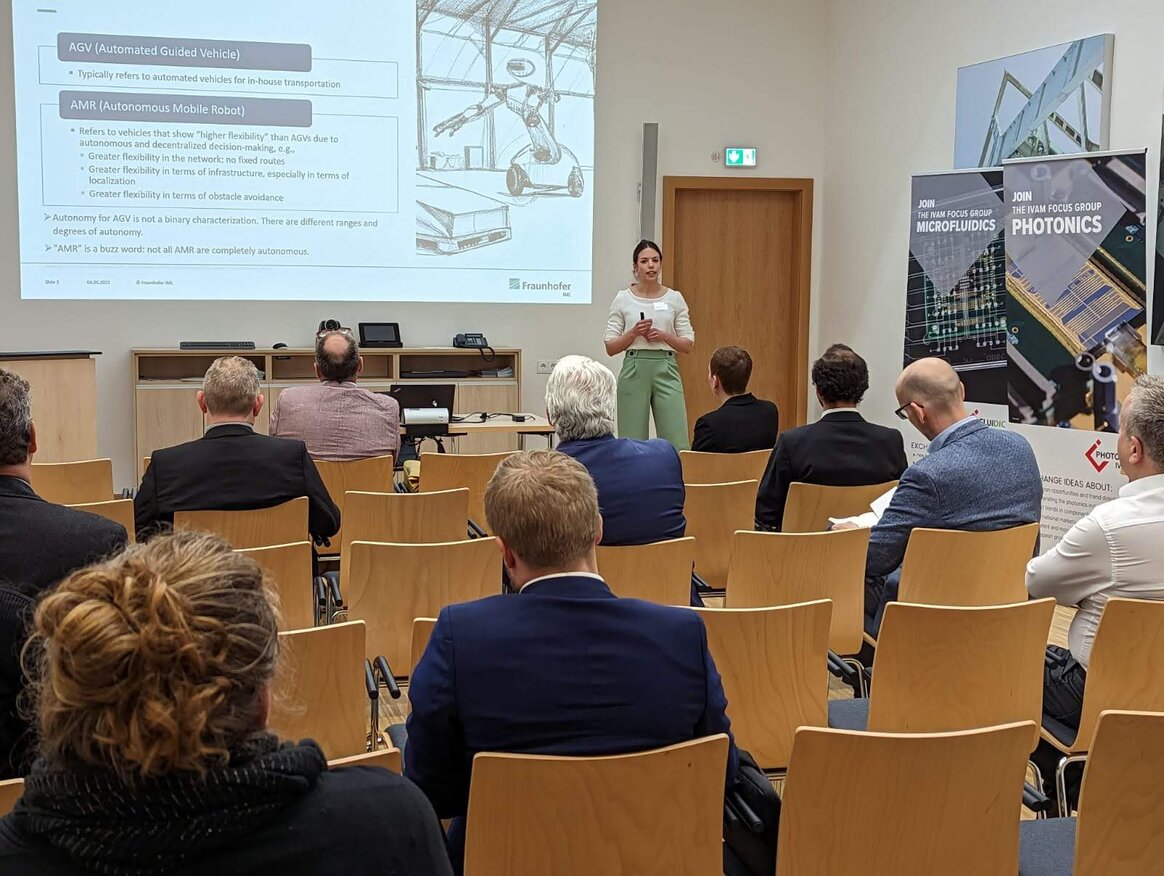
The aim of Smart Health is to leverage technology and data-driven approaches to create a more patient-centered, efficient, and accessible healthcare system that improves health outcomes, enhances patient experiences, and is able to reduce healthcare costs.
One of the topics discussed was support in healthcare through robotics and artificial intelligence. For example, robots can be used to support nursing staff in nursing homes and healthcare facilities. In combination with AI-based solutions such as chatbots, there are numerous attractive possible applications that can help relieve the burden on healthcare systems.
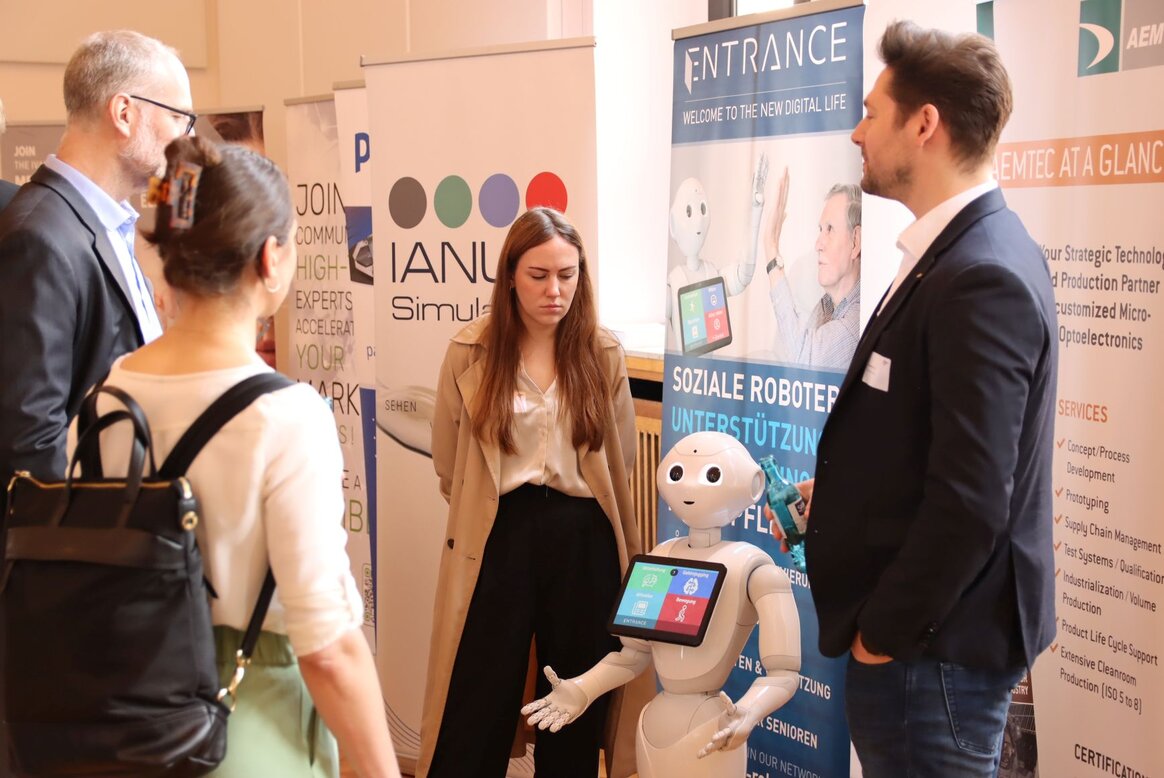
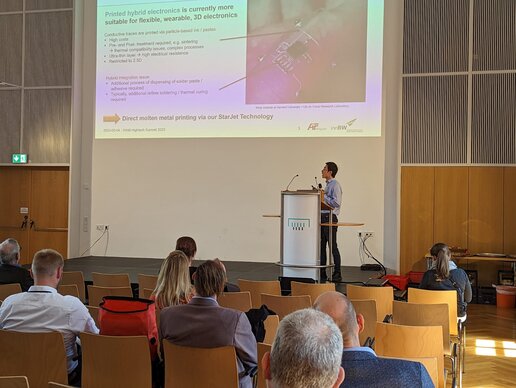
Smart wearables operate on the body and offer functionality that goes beyond the traditional functionality of jewelry or clothing. These devices require sensors, processors and wireless connectivity to collect and process data and communicate with other devices or the Internet.
Current trends and growth markets in the consumer sector are fitness and well-being applications, fertility trackers and the collection of medical data. One interesting example is a smart body suit for the therapy of hemiparesis. The suit is combined with an app that reminds users to exercise, corrects incorrect movements through feedback, and motivates them to keep at it.
Furthermore, the sustainability aspect of smart textiles is an issue: smart shirts can be made from biocompatible conductive fabrics instead of petrol-based materials. A new hybrid 3D printing method for conductive metals to produce smart 3D electronics and sensors allows electronics and sensors to be integrated directly into clothing, making smart clothing washable and therefore more sustainable.
The chemical industry has changed in recent years, from batch-processing to flow-processing. This makes chemical production processes much easier to control, safer, more sustainable and more energy-efficient.
Microfluidics, in this case micro-process engineering, is an important tool in this context. This allows production processes to be developed and optimized before they are transferred to production plants. Since with higher throughput needed there, the channels/pipes are no longer "micro," but the characteristics of the original microprocessing equipment can be transferred.
Flow reactor systems can be modular, so that new processes can be assembled from existing modules according to chemistry requirements, as in a construction kit. Very important in this type of reaction is the precise control of the processes by a large number of sensors. In the meantime, (sustainable) energy can be used to produce, for example, hydrogen or basic chemicals in such plants.
In the final panel discussion, it was once again confirmed that micro process technology has established itself primarily in the laboratory. In production, the principles learned are transferred to plants for greater throughput.
